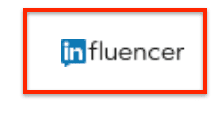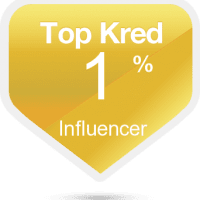
If you want to get your message out, there is nothing like good word of mouth. But, when the recommendation is out of the mouth of an influencer, that’s word of mouth on steroids. {Click to Tweet!} So how, as a brand marketer, can you appropriately and efficiently identify influencers?
Figuring out influencers
The route to identify influencers is not an exact science. The study of influencers is a vast and emerging field. Unless we are talking Opray Winfray or the Dalai Lama, influencers are usually only influential over a certain category of person and within a specific space.
URL versus IRL influence
Naturally, people are typically most influential IRL (in real life) among their own personal network of friends, family and colleagues. That type of word of mouth recommendation is particularly hard to track. Fortunately, the URL (online) influence — including on whom — is easier to visualize.
I thought I would chronicle what I believe are some of the best ways to gauge someone’s level of influence, most notably in the digital space.

- LinkedIn: Look to see how many people (and check scrupulously their profiles) have given the person a quality recommendation (that sounds balanced) on Linkedin. Also, how many people have endorsed that person in a specific category? Meanwhile, the LinkedIn influencers section is a bit too grandiose as yet to be relevant for our needs.
- Twitter followers: What is the ratio of follower to followee on Twitter? As I have written before, if a person has over 2x the number of followers to followees, there is a chance that the person wields influence (in a specific field). The higher that ratio, the more likely (not a guarantee) the influence is higher. Digging a bit deeper, you can check on the types of people following. A few telltale methods: how many followers are fake? Check Fake Followers via SocialBakers. You can also check on the number of subscribers on their Facebook page (if they have a fan page)?
- Engagement level. Whether on Twitter or Facebook, you can see on their stream how many times they engage with their community, or how often they retweet other’s content. To see how often someone is retweeted, there are a number of ways, including using the Twitter search bar RT @personofinterest (which you can then save into your bookmarks or as a column in Tweetdeck, etc.). {Click to tweet!} You could also check to see how often the person is given a #FF (short for Follow Friday, i.e. is deemed worth following) by searching @personofinterest #FF. Alternatively, you can use free tools such as Retweet Rank or TweetReach.
 Influence Measurement Systems. A nascent and still substantially approximative industry, there are several tools that enable you to evaluate someone’s purported online influence. The three top tools are Klout, Kred (only Twitter) and PeerIndex, with the latter of the three largely available only on a paying subscription. These tools are essentially using one or more social media and a secret algorithm that gauges a person’s (or brand’s) ability to impact others. There are other tools, and to some degree Google already has its own version working in the Page Rank and invisible Google algorithm (read Colin Walker’s post). At their heart, these influence measurement tools will be aggregating such factors as #2 and #3 above.
Influence Measurement Systems. A nascent and still substantially approximative industry, there are several tools that enable you to evaluate someone’s purported online influence. The three top tools are Klout, Kred (only Twitter) and PeerIndex, with the latter of the three largely available only on a paying subscription. These tools are essentially using one or more social media and a secret algorithm that gauges a person’s (or brand’s) ability to impact others. There are other tools, and to some degree Google already has its own version working in the Page Rank and invisible Google algorithm (read Colin Walker’s post). At their heart, these influence measurement tools will be aggregating such factors as #2 and #3 above.- Meanwhile, not to be forgotten, there is still the old fashioned way: e.g. POTS. Write or call up people you know and respect in the sector and ask their opinion about the person. The important questions to ask: Would you hire him/her? Would you trust what he/she says or writes?
 Identify influencers… then what?
Identify influencers… then what?
Once you have identified influencers in your community (for your brand), then the real question is how are you going to engage with them? That is surely the topic of another post!
What other ways do you like to use to find influencers?













Thanks for the link Minter.
Thanks for the link Minter.
Good to know thanks
Good to know thanks
Hi Minter,
It is a good question. We actually ran a webinar on that topic last week with Our Social Times ! I will strongly challenge that Kred, Klout and Peerindex measure influence; at best these scoring systems measure online popularity. A number of more focused influence tools exist. You really have to look at technologies that identify people based on context as well as popularity if you want to identify the people who will have an impact FOR YOU.
Hi Minter,
It is a good question. We actually ran a webinar on that topic last week with Our Social Times ! I will strongly challenge that Kred, Klout and Peerindex measure influence; at best these scoring systems measure online popularity. A number of more focused influence tools exist. You really have to look at technologies that identify people based on context as well as popularity if you want to identify the people who will have an impact FOR YOU.